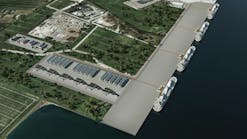EPRI Teaming with NVIDIA, Big Tech and Utilities on Pursuing Generative AI Energy Solutions
The nonprofit Electric Power and Research Institute (EPRI) has launched a new energy consortium focused on driving development and deployment of open-source artificial intelligence (AI) models tailored to the power sector.
Joining the Open Power AI Consortium are some of the biggest U.S. commercial and industrial electricity customers, such as Amazon Web Services, Microsoft, NVIDIA and Oracle.
AI both promises to make energy delivery more efficient, but its model training demands also are creating future data center load challenges which threaten to overwhelm the power sector. According to EPRI, the Open Power AI Consortium will unite to focus on developing and maintaining open-source AI/Generative AI (GENAI) domain-specific models, datasets and libraries to address challenges specific to the power sector.
The consortium also hopes to work on ways to collaborate with startups, university researchers, national labs, utilities and technology companies.
“Over the next decade, AI has the great potential to revolutionize the power sector by delivering the capability to enhance grid reliability, optimize asset performance, and enable more efficient energy management,” said EPRI President and CEO Arshad Mansoor, in a group statement. “With the Open Power AI Consortium, EPRI and its collaborators will lead this transformation, driving innovation toward a more resilient and affordable energy future.”
EPRI and partners launched the consortium news at chip and processing unit maker NVIDIA’s GTC Conference for AI developers in San Jose this week. EPRI is working with GENAI platform Articul8 and NVIDIA to develop the first set of domain-specific GENAI models (DSM) for electric and power systems advancing the energy transformation to decarbonization.
"The power and utility industries are the backbone of modern society, impacting every aspect of our daily lives,” said Marc Spieler, senior managing director of energy at NVIDIA. "As the industry faces increasing complexity—ranging from grid modernization to decarbonization and resilience—EPRI is bringing leaders together to form open, industry-specific LLMs and AI models that will be essential to accelerating innovation and efficiency.”
The DSM will be made available as an NVIDIA NIM microservice for early access, EPRI noted. Other non-utility companies engaging in the Open Power AI Consortium include Articul8, Linux Foundation Energy, Rolls-Royce SMR Ltd., SHI and WWT.
Utilities, researchers and power equipment developers coming onboard the combined effort to develop GENAI solutions for the power sector include ACWA (NOMAC), Alliant Energy, Ameren, Constellation, Con Edison, CPS Energy, Dairyland Power Cooperative, Duke Energy, ENOWA (NEOM’s Energy and Water Company), Exelon, GCC Interconnection Authority, Georgia Transmission Corporation, KEPCO, KHNP, Khalifa University, MISO, North Carolina’s Electric Cooperatives, New York Power Authority (NYPA), Pacific Gas and Electric Company (PG&E), Portland General Electric, PPL Corporation, RTE, Santee Cooper, Saudi Electricity Company, Southern Company, Southern California Edison, Tennessee Valley Authority, WEC Energy Group, and Westinghouse Electric Company.
Southern Company, which owns utilities such as Georgia Power and Alabama Power, is embracing GENAI as a means handled the challenges of deeper electrification in the industrial, transportation and power sectors.
At last year’s Accenture International Utilities and Energy Conference in Portugal, Southern CEO Chris Womack highlighted the commitment of using GENAI to addressing the future power generation issues.
“There will be power,” Womack said at the May 2024 event. “To be efficient and responsive in meeting this demand and keep customers closely engaged, “GENAI has got to be part of how we run the company.”
The power needs of AI training models will also drive an exponential growth in both hyperscale data center construction and electricity demand. Some forecasts call for more than 50 GW of new data center load coming online by the early 2030s, more than doubling the current electricity demand from that sector.
Other utilities from around the world, including EDP, ESB and Duke Energy, echoed Womack’s forecast for GENAI to revolutionize data analytics and the decentralizing and aggregating impacts of distributed energy resources.






